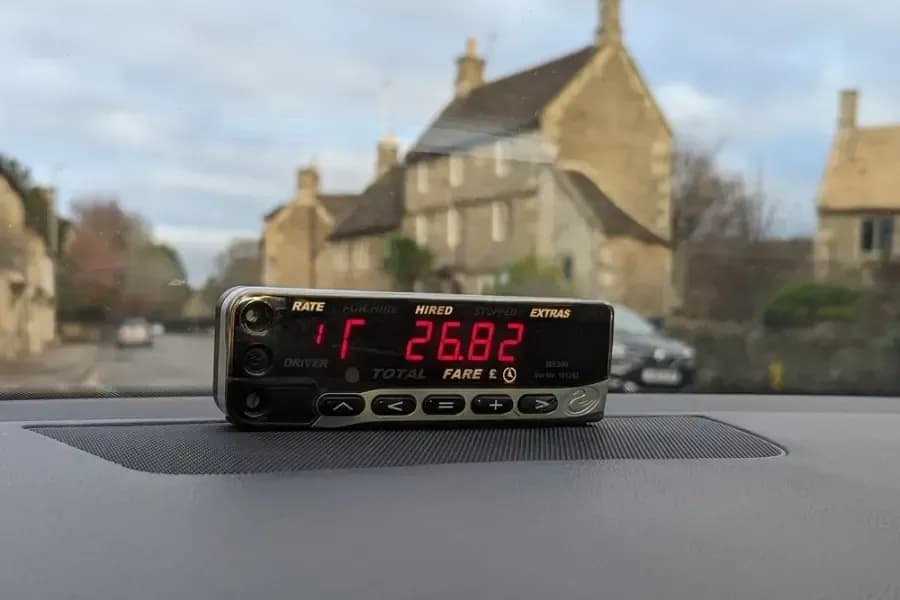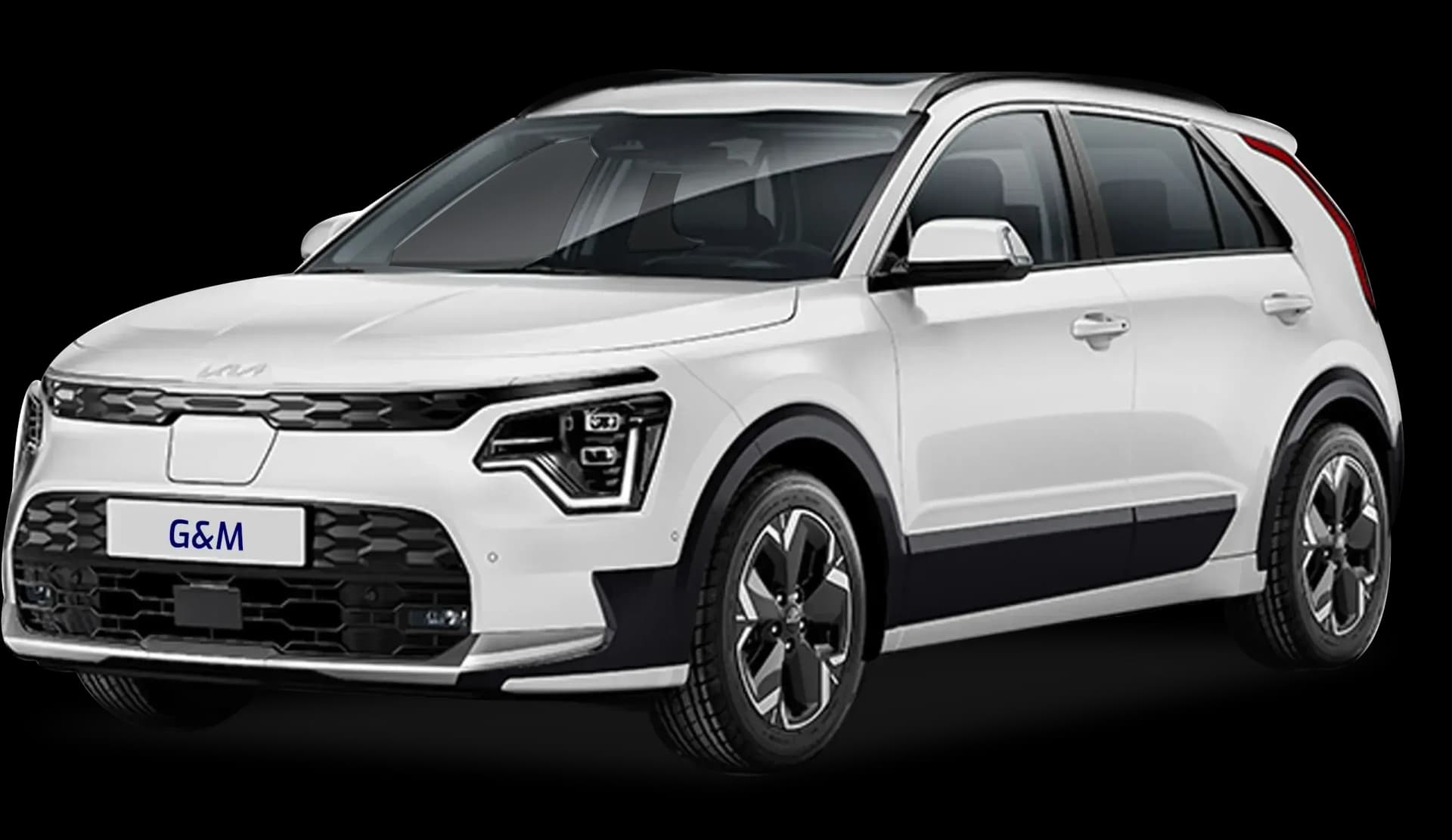 PCO Blog
PCO BlogShare this on
EV & Hybrid Taxi Rentals
Short contract PCO Hybrid & EV cars to hire
- Short 4-weeks contracts
- Call us and collect a car same day
- Hybrid and EV cars available
- Start earning with Uber today

Is Bolt cheaper than Uber?
While specific prices vary depending on the city and circumstances, here’s a general breakdown:

- Bolt: Typically 10-20% cheaper than Uber for standard rides.
- Uber: Uber is known for wider service options (e.g., UberX, Uber Comfort, Uber Black) but has slightly higher fares for the same trip than Bolt.
To determine which is more cost-effective for you, keep reading this guide.
Pricing Strategies of Ride-Hailing Services
A deep dive into the financial structures of Bolt and Uber reveals distinct approaches tailored to their operational philosophies and market strategies.
Bolt's Pricing Model
Bolt starts with a relatively low base fee to seize the attention of cost-conscious consumers.
Rates per mile are then applied, maintaining a competitive edge through minimal additional charges. This structure aligns with Bolt's market positioning as an affordable and accessible option for daily commutes.
Learn more: How to Become a Bolt Driver using the app
Uber's Pricing Strategy
Uber presents a flexible pricing strategy, adapting to the various markets it serves. The base price often eclipses Bolt's, complemented by per-mile rates that may vary contingent upon a slew of factors including vehicle type and locality. Uber's additional fees, including booking charges and other costs, might escalate the overall fare, especially during high-demand periods.
RELATED: Calculate the Exact Taxi Fare in London
Bolt and Uber employ distinctly different methods to calculate the final fare for a given trip, entwined with their business strategies and consumer perception. Insights into these strategies reveal the impact on the rider's cost. While Uber adopts a dynamic approach, factoring in multiple elements, Bolt pursues a straightforward, value-for-money proposition.
- How does Bolt's lower base fare attract price-sensitive customers?
- In what ways does Uber's variable pricing cater to different market segments?
- When selecting between the two, what are the financial implications for a regular commuter?
Learn more: PCO car hire for rent

Cost Analysis: Bolt vs. Uber in Britain
When traversing through key British cities, the choice between Bolt and Uber often comes down to price. A comprehensive survey reveals that both ride-sharing services offer competitive rates, which can vary depending on the city, time of day, and demand. In the heart of London, a standard journey from the Tower of London to the British Museum exhibits cost disparities.
Detailed Breakdown of Average Costs
- In London, Bolt's fares start at £2.50 base, plus £1.25 per mile and £0.15 per minute. Uber's pricing, on the other hand, commences at a £2.50 base fare, with £1.25 per mile and £0.15 per minute as well.
- Heading north to Manchester, the pattern shows slightly lower rates. Bolt charges a base fare of £2.20 with £1.10 per mile and £0.10 per minute, while Uber has a base fare of £2.50, £1.25 per mile and £0.15 per minute.
- In Birmingham, Bolt's rates continue similarly: a £2.20 base fare, £1.00 per mile, and £0.10 per minute. Comparatively, Uber's rates begin at £2.40 base fare, plus £1.20 per mile and £0.15 per minute.
Cost Comparison Chart for Typical Journeys
A visual comparison chart of fares demonstrates that Bolt's pricing aligns closely with Uber, but often undercuts its competitor by narrow margins. An average 5-mile, 15-minute trip during off-peak hours translates to approximately £10-£12 with Bolt, against £12-£14 with Uber.
Additional Fees and Considerations
Beyond the baseline fares, both services impose additional costs that can influence the final bill. Congestion charges, airport fees, and premium vehicle selections lead to price increases. For instance, rides originating from London's Heathrow Airport include an additional booking fee and airport surcharge. Regular users should consider these variables for a realistic estimate of their travel expenses.

Bolt and Uber Costs During High Demand
Surge pricing adjusts the cost of a journey in real-time, aligning with demand and supply dynamics. When demand for rides outstrips the number of available drivers, fares increase, incentivising more drivers to get on the road. Conversely, the prices fall as the demand dwindles, balancing the equation.
Bolt's approach to surge pricing involves increasing fares during high-demand periods. These increments are a multiplier of the standard rates.
For instance, a 1.5x surge means passengers pay one and a half times the usual fare. Uber operates similarly, calculating increased fares through a dynamic pricing algorithm that considers several factors including, time of day, traffic patterns, and local events.
Flexibility is key to sidestepping surge pricing on Bolt and Uber. Avoiding peak times like rush hours or events that draw large crowds can significantly save on costs. Monitoring the apps before booking may reveal fluctuating surge rates; a delay of a few minutes could mean a cheaper ride. Both services occasionally notify users of expected fare drops, providing an opportunity to book when prices normalize.
- Consider travelling outside of peak hours to bypass surge charges.
- Check the app periodically, as surge prices can drop quickly.
- Sign up for notifications to stay informed about fare changes.
Your Journey's Value with Bolt and Uber
The comparison between Bolt and Uber suggests pricing remains variable, contingent on a multitude of factors. While in some instances, Bolt emerges as the more affordable option, Uber’s extensive reach and technological investments can justify higher fares.
After considering multiple elements ranging from surge pricing to promotional discounts, you now possess a comprehensive foundation to gauge which service might suit your pocket. But remember, pricing is not the sole criterion.
Service availability, the calibre of customer support, and environmental initiatives also contribute significantly to the overall value presented by each ride-hailing platform.
Real-time circumstances will significantly influence your experience and expense. Thus, downloading both apps could provide a strategic advantage, granting the opportunity to assess real-time pricing and make an informed decision based on current conditions and available offers.
Related Articles
 PCO Blog
PCO Blog PCO Blog
PCO BlogFinding Convenient Alternatives to Weflex
 PCO Blog
PCO BlogHow to Get a Taxi Licence in Birmingham: A Step-by-Step Guide for Private Hire Drivers
PCO EV Fleet
We have diverse EV Fleet to offer for PCO drivers in London.













